How I restored an old half-forgotten suitcase box into a vintage sewing box.
![]()
It was there, in the corner of the basement, all alone and forgotten. I thought it was strange that I’ve never noticed it before but once I did I wasn’t going to let it rot there.
![]() This type of suitcase was used to carry LPG cylinders and gas cookers, families often take it along for camping. They have a golden triangle with the inscription “Palavan Propan butan” imprinted in the front.
This type of suitcase was used to carry LPG cylinders and gas cookers, families often take it along for camping. They have a golden triangle with the inscription “Palavan Propan butan” imprinted in the front.
Such a suitcase is not a valuable piece, it’s made from a sturdy glue-infused cardboard with leather-like finish. The edges and other components are made from metal, except the handle which is plastic. My suitcase was shabby, a little rusty and the lining needed replacing, however, the construction was fine and it wasn’t deformed. I wanted to restore this vintage suitcase into a sewing box without dismantling it. I knew that that meant the metal components would keep the scratches but I also knew the rest could be cleaned. So the objectives of the restoration were to:
- change in inside lining
- restore the outside
- clean the metal components as much as possible
I decided to use cleaning products for leather because I know they work well with this kind of cardboard and they will promote the leather-like appearance.
If you’d also like to make a smaller sewing box, here’s my String Basket From a Box tutorial. And browse the Sewing category for sewing tutorials and ideas.
Table of Contents
Supplies:

- thickly woven 100% cotton canvas
- sewing machine + needles
- pins
- scissors
- paper
- pencil
- ruler
- fabric glue
- water
- citric acid
- jewelry polishing cloth/cotton
- brown shoe polish
- wax for leather
- spray polish for leather
- cloths, paper towels, old toothbrush, ear buds
How I Restored an Old Suitcase into a Vintage Sewing Box
Before

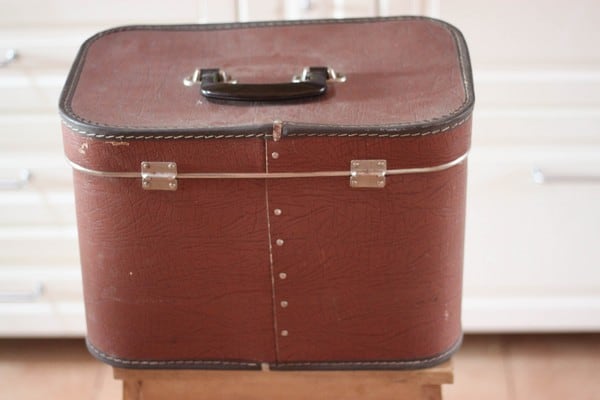
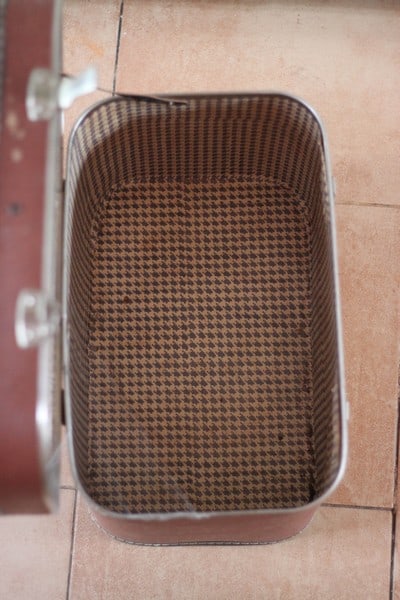
This is what the suitcase looked like before – the inside has to go, the metal parts are rusty and the “leather” needs some beauty treatment.
Inside – Get rid of the paper and prepare for sewing
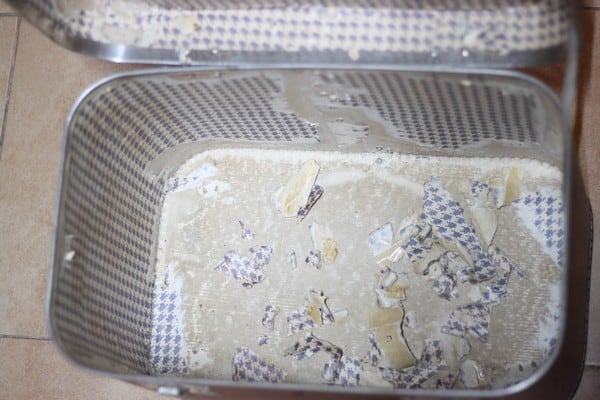
The paper stuck away from the box in several places so I peeled it away with my hand. As for the rest, I had to shower it with warm water for a few minutes. I wouldn’t let the box stand in water as it’s made from cardboard but showering is fine. The cardboard is so soaked with the glue that there is a protective layer.
Peeling away the rest of the wet paper was a piece of cake. I dried the inside of the vintage suitcase with a towel and then I let it dry some more next to a radiator.
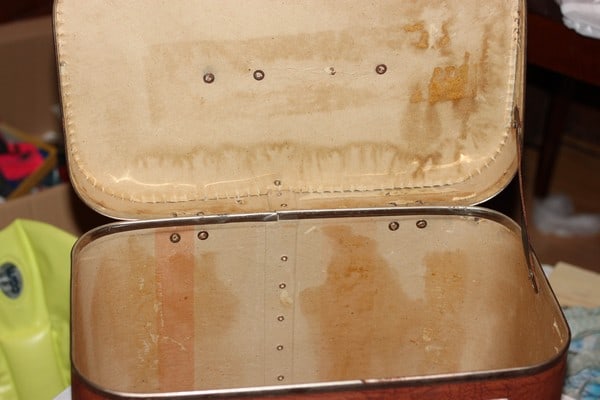
The dry box still had some glue stains but these didn’t bother me.
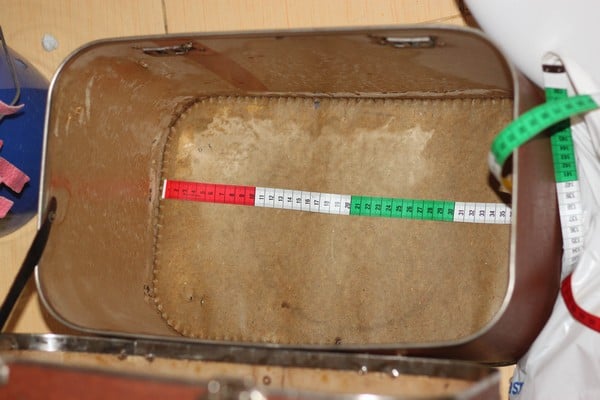
Next I measured the inside of the box and also of the lid.
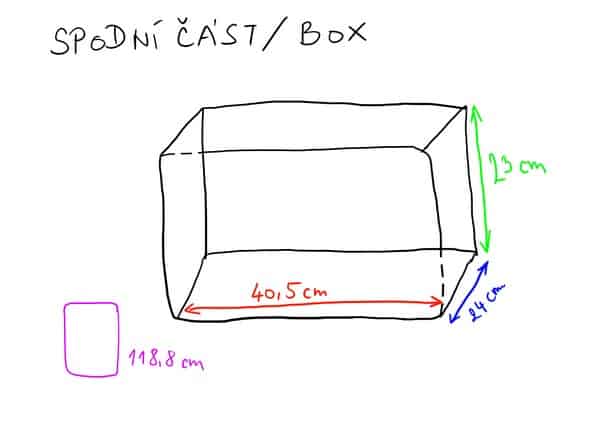
This is the box – Length is in red, width in green, height in blue and circumference in purple.
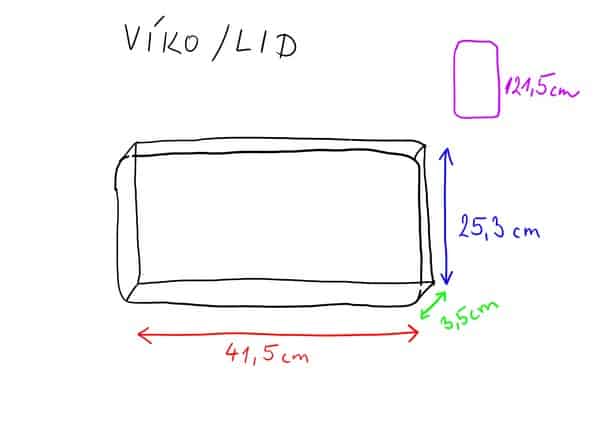
And this is the lid – length is in red, width in blue, height in green and circumference in purple.
I want a 1 cm seam allowance which means I will add 1 cm on each side of all the pieces. However, I want to add 4 cm in total to the length of the side pieces (of both lid and box).
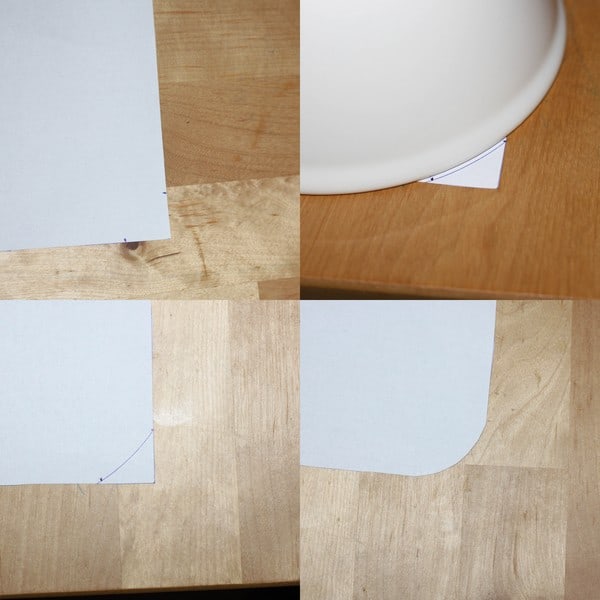
I made a paper rectangle for both lid and box of the exact measurements. To round the corners I measured 2 cm on each side of the corner and then connected the two points tracing the round shape of a bowl. I cut the corner round.
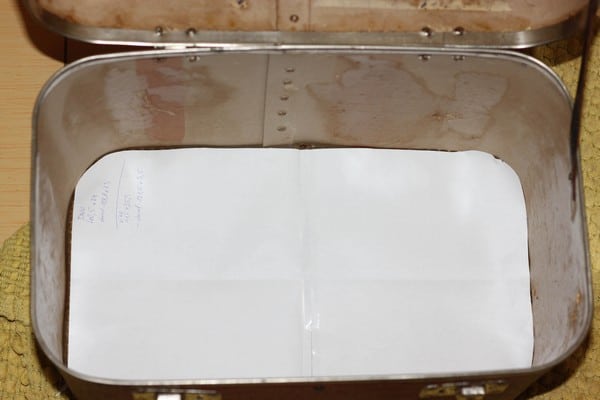
I placed the paper pattern inside the box/lid and kept adjusting the shape of the corners until I was happy with it.
![]()
I cut one rectangle and one side stripe for each part of the suitcase (box and lid). What you see in the picture are the measurements including the seam allowance.
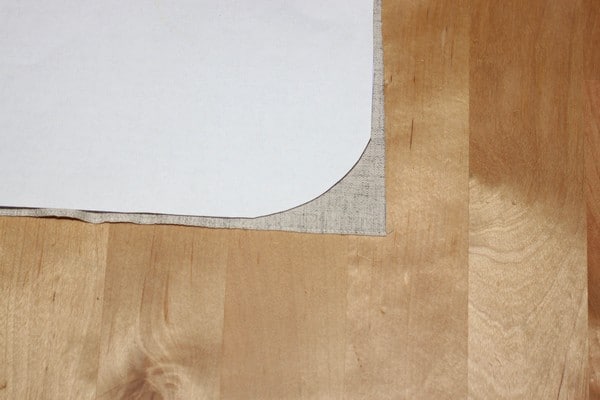
I placed the paper pattern on the fabric rectangles and traced and cut the round corners.
Inside – Sewing
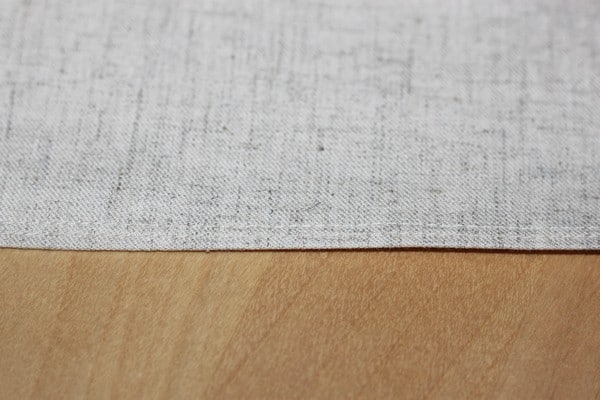
First, I took the side parts (long stripes of fabric), folded them in 1 cm, pressed and top-stitched with a double-needle. These will be the edges that I’ll glue to the edge of the suitcase so they should look neat.
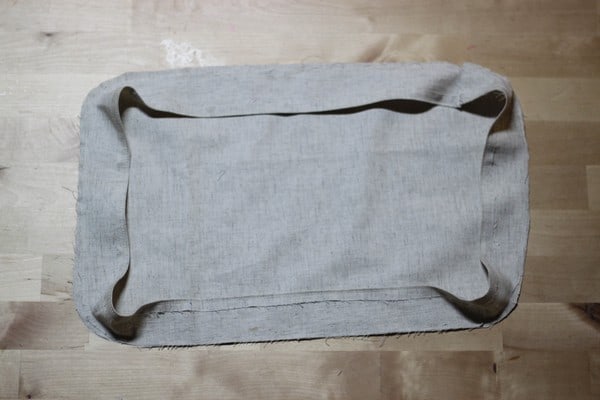
Then I placed each side piece on the corresponding rectangle right sides together, pinned it all around it and sew 1 cm from the edge. I trimmed some of the excess fabric.
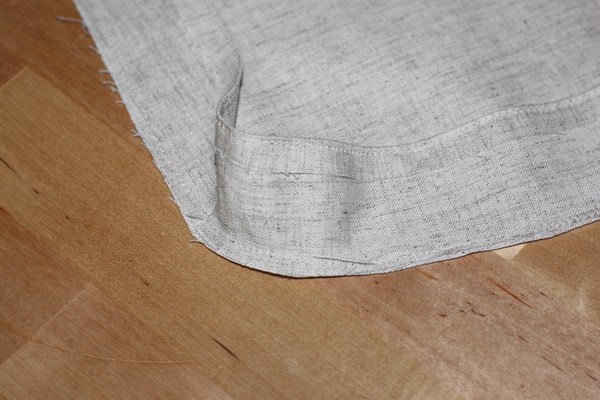
I cut the fabric of the side pieces there were it was supposed to copy the round corner. I made about 6 small cuts, each only of 3 mm. This helps the fabric copy the shape.
Cleaning the metal
As I said, I didn’t want to dismantle the box and I accepted that there’d still be scratches on the metal. I just wanted to get rid of the rust.
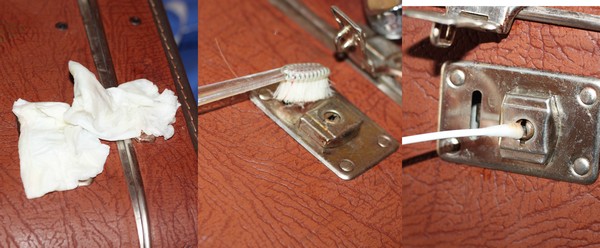
I made some citric acid solution by mixing 1 cup of water and 1 tbsp of the acid.
I used one paper towel for each metal part – I folded the towel several times, dipped it fast in the solution, wrung it out and then wrapped the wet towel around the metal part. I left it there for 24 and during this time I made the towel wet again several times. After one day I took of the towels and used an old toothbrush, the earbuds and some water to clean away the rust.
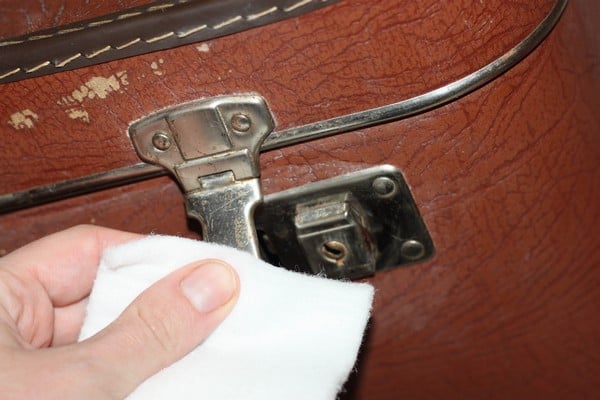
I polished the metal with the polishing cloth.
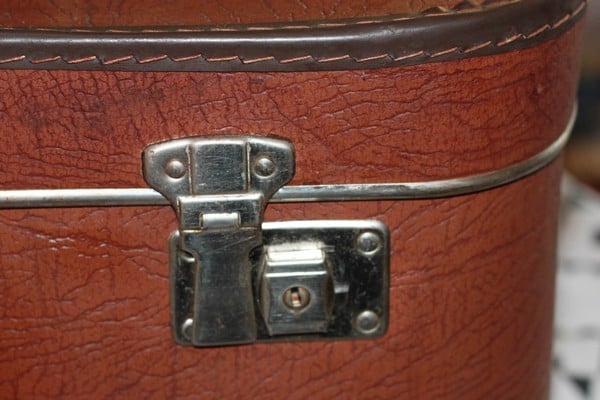
This was the result – scratches are still there but the rust is gone.
Treating the outside
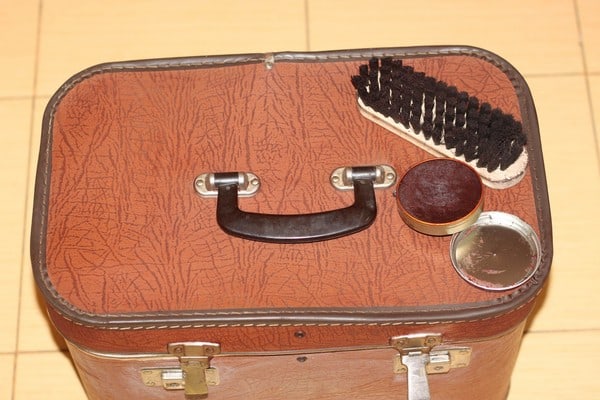
First, I wiped the outside with a wet clothed and dried it. Then I rubbed in some brown shoe cream. The difference was visible immediately.
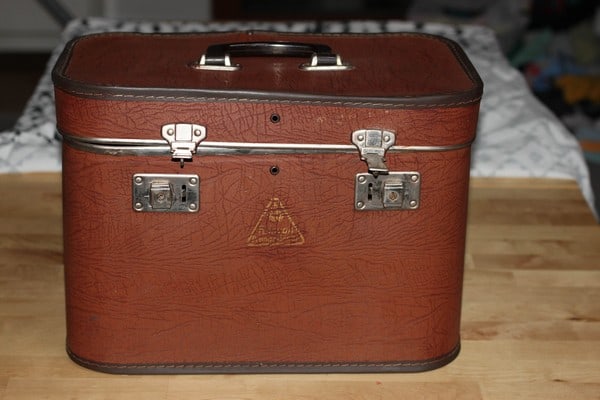
This is the the suitcase after the first round of treatment.
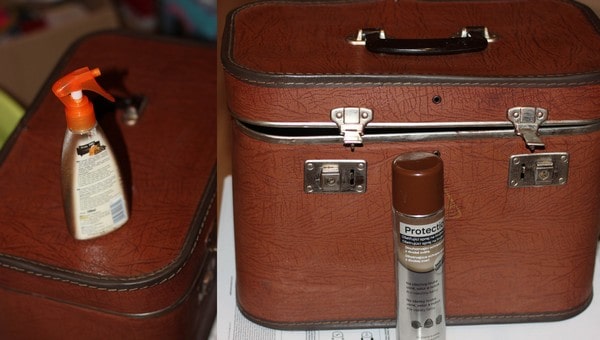
After the cream had soaked in I treated the outside (except the metal and the handle) with wax for leather and then with protective spray for leather.
Glue the lining
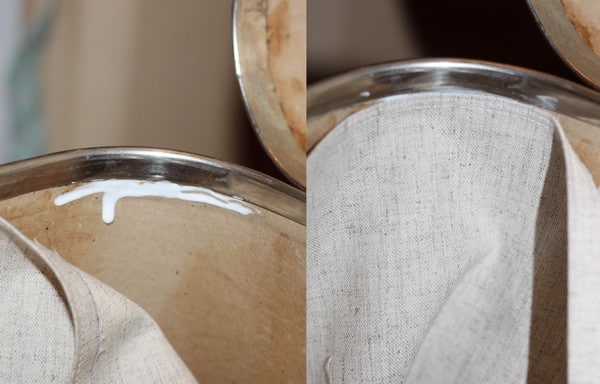
The last bit was gluing the lining. I decided to glue only around the edges. I applied some fabric glue a few centimeters around the metal edge and waited 20 seconds. In this time the glue starts to set, then I just place the edge of the lining on it and rub it gently with my fingers. Before I placed the lining inside the box/lid and aligned the corners.
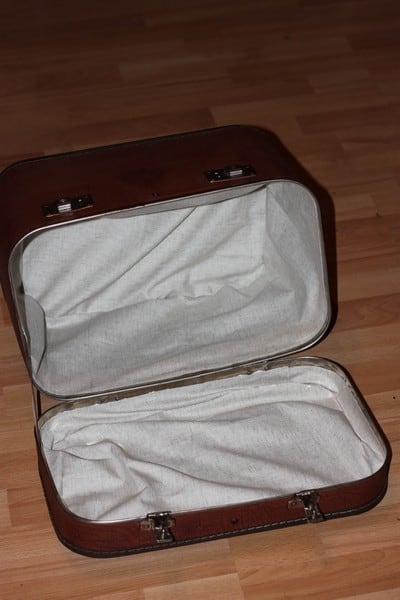
I glued the lining for the box and the lid in the same way.
And done!
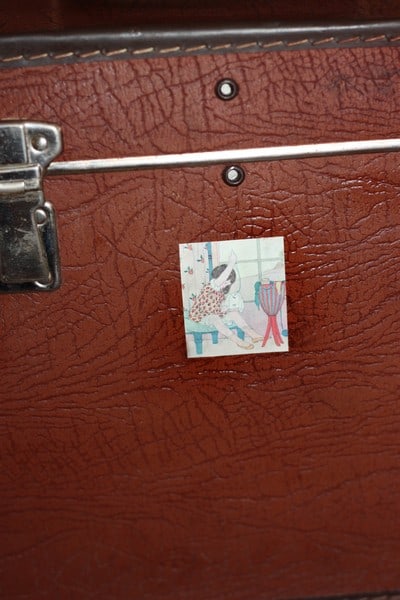
I wanted to cover the triangle and I found a perfect vintage sticker for a sewing box! I spray-varnished it and the last thing left to do was to fill the vintage sewing box with sewing supplies.
![]()
![]()
![]()